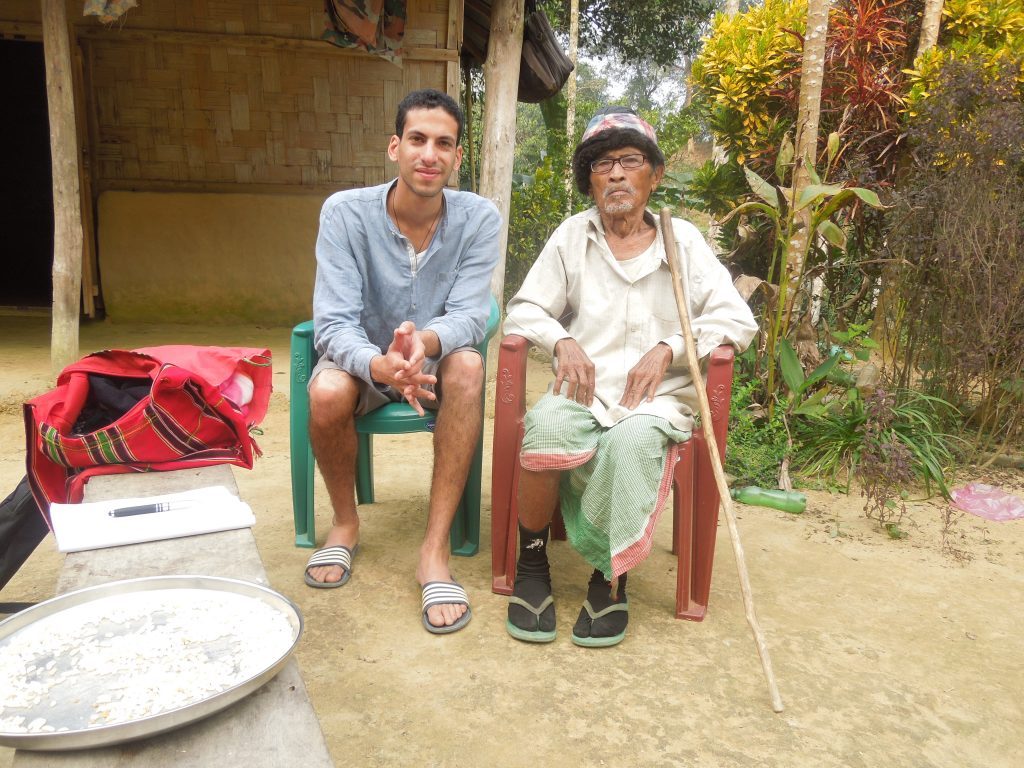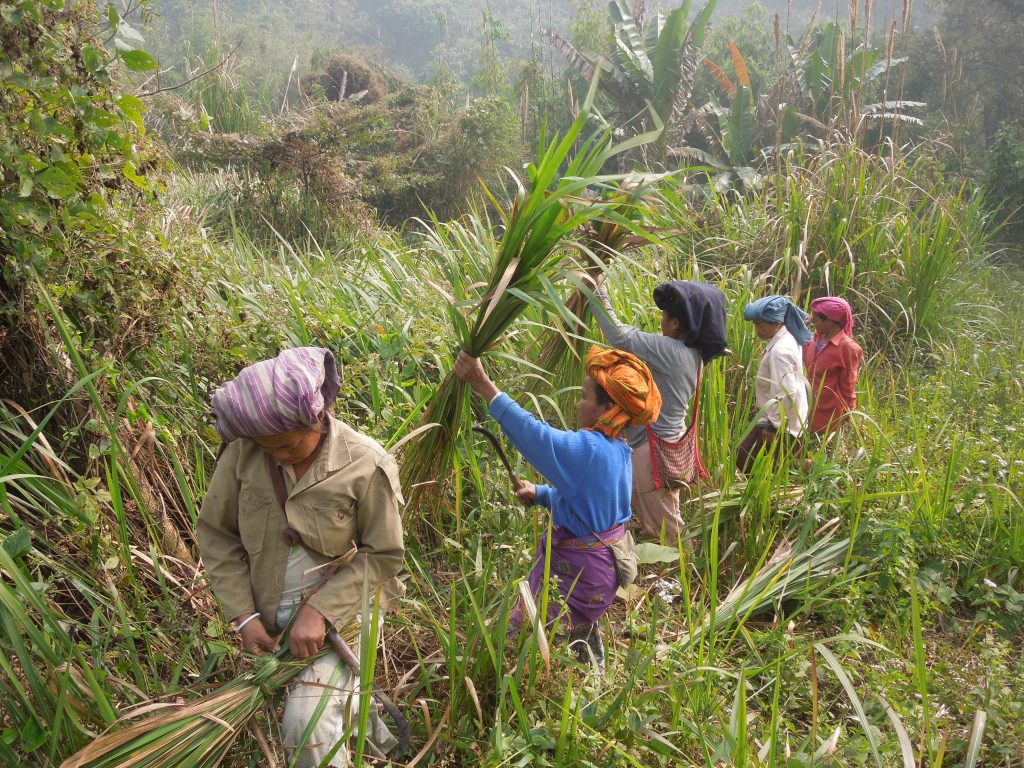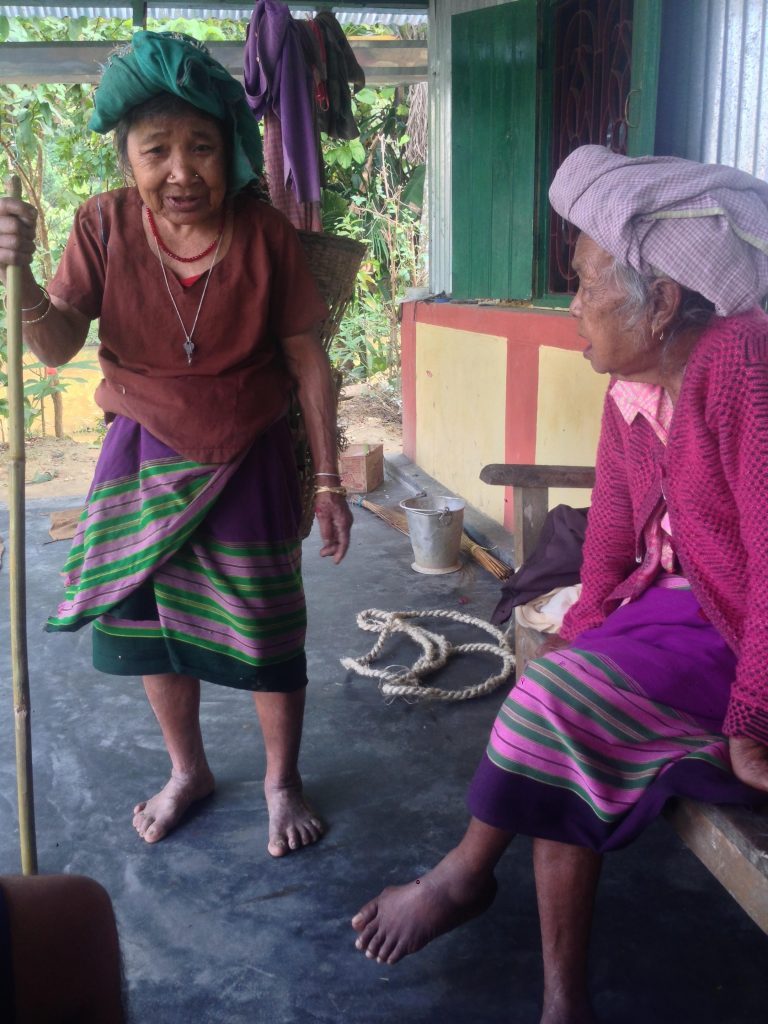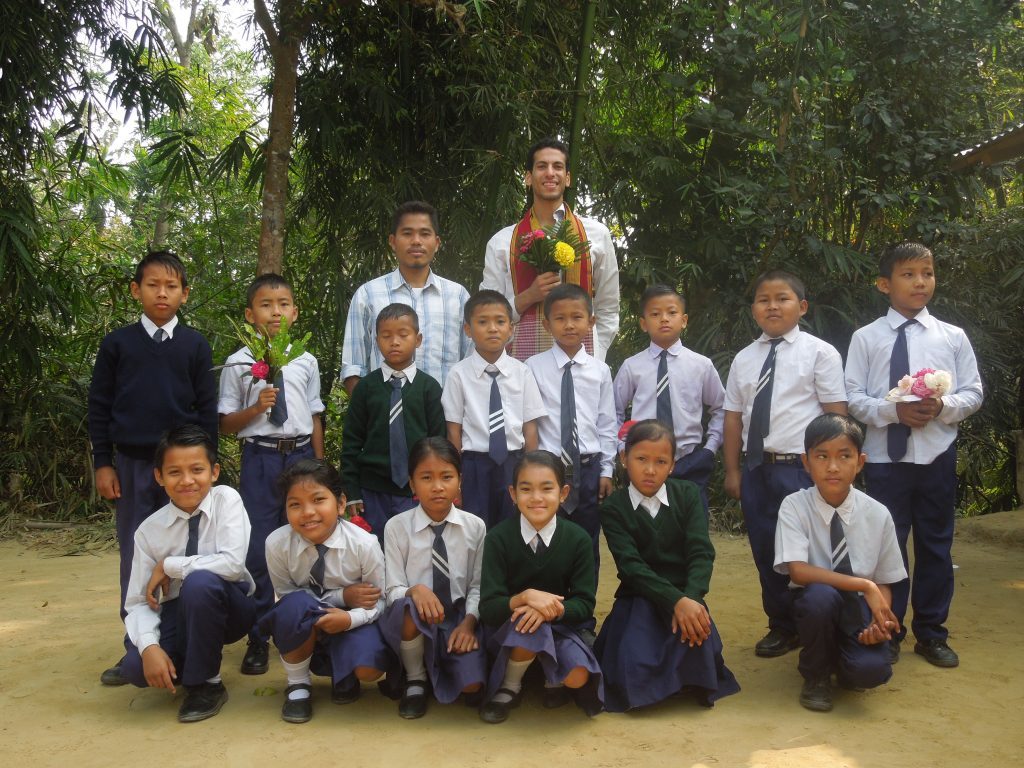A conversation with Alice Rowan Swanson Fellow Hadi El Rabbat
March 27th, 2019 | Alumni, Fellowships, SIT Study Abroad

Hadi El Rabbat was an international business major at Stonehill College in Massachusetts in 2012 when he decided to study abroad on SIT’s International Honors Program, Health and Communities: Globalization, Culture, and Care. That semester took him to China, South Africa, and India.
It also threw a wrench in the works.
“Although I had almost finished, I realized [international business] wasn’t really my thing. I was interested in a different field, one that had to do with development, peace and justice, so I switched to international studies as soon as I returned.”
That decision took him on a second SIT experience, this time to Nepal on the Tibetan and Himalayan Peoples program, where he studied under Academic Director Isabelle Onians, and where the future he sees for himself began to take shape. “When we got there, the SIT program team gave us each 50 rupees and told us to go out, write down what we saw, and then find our way back. I’ve never learned that way in my life. They threw us into the culture. I learned how to learn. My dream started developing because of SIT.”
I learned how to learn. My dream started developing because of SIT.
El Rabbat was born and raised in Cologne, Germany to parents of Egyptian origin. He speaks German, English, Arabic, beginning French and some Tibetan, but said that before SIT, he wasn’t much interested in his own heritage. “At SIT, I realized how much I love learning about cultures and I got curious about my own home and family and culture.”
Today, he dreams of building a global network of “knowledge centers” where indigenous communities can gather and connect to talk about common issues, current risks, and what knowledge they can share. The first step in that dream starts this year, when he will travel from his home in Germany to India as an Alice Rowan Swanson Fellow, a program offered through SIT for study abroad alumni who want to return to the area where they studied to carry out a community-based project that promotes human rights.
Through his project, “Preserving Nature and Tradition: Natural Integration of Indigenous Knowledge into a Modern World,” El Rabbat plans to build a research and education center with an identity-endangered Rangkal tribe in northeast India.
We talked with El Rabbat about his fellowship plans and the concepts, thinking, and beliefs that led him to it:
SIT: After you graduated from Stonehill you returned to India to teach and again to do archival work. Can you talk about those experiences?
El Rabbat: I applied to a program to do a year of service in one of the seven sister states of northeast India, which is considered a tribal and conflict region. I was mostly teaching classes during the day in Agartala, the capital of Tripura state, where so many cultures come together. It’s an interesting place. I had a lot of different students from different villages and tribes, and during my year there I kept getting invited by students to their villages. I found it so interesting, when I would get invited to a village, to see how much the elders know, how happy and minimalistic they were. They had very efficient social structures that we dream of in the developed world. I thought, wow, I want to learn more about this and write it down.

What’s an example of that?
It was my first time in one of the most rural villages – the one where I’m planning to do this project – and one of the villagers asked me, ‘What do you want to eat today? We’ll make whatever you want.’ I said, Okay, how about fish? So, we caught about 40 fish and put them in a sack. A person from the village walked by and saw the sack, reached in and grabbed a fish. Then a second person walks by, looks inside the bag, and takes one. This keeps happening. I started feeling anxious – why are they taking our fish? – but I realized this is some conditioning within me. There was not a single consideration to be read on their faces about the sharing fish. We only needed about two fish, so we had fished for the entire village.
Another time, I asked one of the women in the village if I could spend a day working with them. The women meet about 5 a.m. at a different house every day, eat breakfast together, and discuss who needs what. So one woman might say, ‘Okay, I need wood.’ Another might say, ‘I need long grass to patch my roof.’ So on Monday, all the women cut long grass. On Tuesday, they cut wood. They all work together and there’s no money involved. It is such a perfect system.
Can you tell us more about the tribe you will work with on this project?
The tribe and the language are both called Rangkal. It’s an indigenous language – there are many different tribes in this region, but this language is completely different, and nobody knows where this tribe came from. It’s a very respected tribe in northeast India. It’s also one of the smallest tribes, and the knowledge won’t be there much longer if we don’t act now. Some of the elders are quite old – and quite strong. An elder who passed away a few months ago was 106 years old. I saw her a few years prior to that. She knew I was coming – she heard me through the jungle, and she had an excellent memory. She remembered all the things we had talked about when I was there before.

Why is there such urgency for this project?
Since the road arrived eight or 10 years ago, many elders started sending their kids to English primary schools in the capital. So during the school year the village is empty of children. The elders still work in the paddies or cutting herbs in the jungle. But now they believe they need money to send their kids to schools to learn English. And how do many of the tribes make money? They cut down the jungle, replace native trees with rubber trees which are highly damaging to the soil, and sell the resources to send their kids to school so their kids can have a good job and make money and build cement houses.
Why do they want cement houses? I heard it said once that nobody was poor in a village until the first person got a television. The same applies here. They see a cement house and they want one. But it gets up to about 120 degrees in this village, with 100 percent humidity. A cement house becomes a sauna. So there is a need to integrate the native knowledge into modern development, such as building innovatively with bamboo.
How do you plan to document their systems and knowledge?
My philosophy is to be as boring and academic as possible. I don’t go with a laptop and cameras and then post stuff on social media. The point is simply to go, to archive, to discuss current issues and how this archived knowledge can be integrated into the development that the villagers want.
When I was there before, I visited a village of about 200 people – called the cliff people – who have a tradition of beekeeping, and where there are amazing heights, waterfalls, rainbows. A friend of mine who grew up there for part of his childhood wanted to help create development in this village, so he did a documentary and put it online. This created a wave of tourism. People came to see the rainbows and cliffs and taste this delicious honey and cross these [natural] bridges over a river. So, this documentary started attracting tourism, and the people started opening shops for tourists and bringing in mass-produced goods, which created tons of plastic. But the people were not educated to cope with a sudden influx of cash and plastic. They started building houses out of cement and throwing the plastic into the river. They weren’t ready for such a project.
I immediately asked some of my mentors in the field what [as a researcher] I could do wrong. They said, you can’t tell them what to do. So, I never told anybody, ‘Don’t throw your plastic into the river.’ But I would show them pictures of my travels in villages that I’ve seen change over time, and they would say, ‘Okay, this is not good. Why did this happen? What do you think we can do?’ So it’s essential that they understand for themselves.
What knowledge do you plan to archive and how will you do it?
The reason I picked this village is that they like to share and discuss current issues in group gatherings. I already told the community about the project, so when I return we’ll have a gathering with youth and the elders to discuss and refresh this concept of a community knowledge center. The land for it is already there. The design will be a bamboo and mud building – which is the traditional way of building – but in a modern way. I’ve been in close contact with a German civil engineer who has been working on several sustainable projects using bamboo in Latin America. I will purchase a computer, a camera, an audio recorder and an Internet device (they already have Internet). We will archive anything: food, plants, building methods, historic events, the language, jungle honey-gathering, the 1,000 things you can do with bamboo.
It’s amazing what you can do with bamboo. One time we were at a birthday party where there was only one knife to clean potatoes but five people who needed to help, so someone grabbed a piece of bamboo and made five potato knives!
It will be an innovative yet traditionally designed community space using only local resources, a place where people can gather and archive, and a place of coming together. This knowledge will be written down on paper and printed out, and it will be uploaded into an online data forum.

Ultimately, where do you see all of this taking you? What are your plans for your own future?
While studying conflict resolution I kind of got mad. Why is there so much conflict? One of the things I realized, over and over again, was the importance of grassroots conflict resolution. So, my dream is to build community knowledge spaces and connect them. Bedouins in Egypt or villagers in Mali will have centers and, through Skype, can discuss what sustainable development means to them and what the current risks are. For me, this is a true global cultural exchange – when you have a veiled Muslim Bedouin talking to a tribal woman in East Asia, a Tibetan monk talking with a Latin American shaman to discuss the meaning of life and how that can be implemented into meaningful, peaceful development.
The purpose of my being is to protect Mother Earth. But I think it’s not possible from the top down. My dream is to do that from the roots, and to serve people as a light. I have the intellectual knowledge, but they have the true knowledge of nature. I don’t know anything that they know. They are the knowledge keepers.
